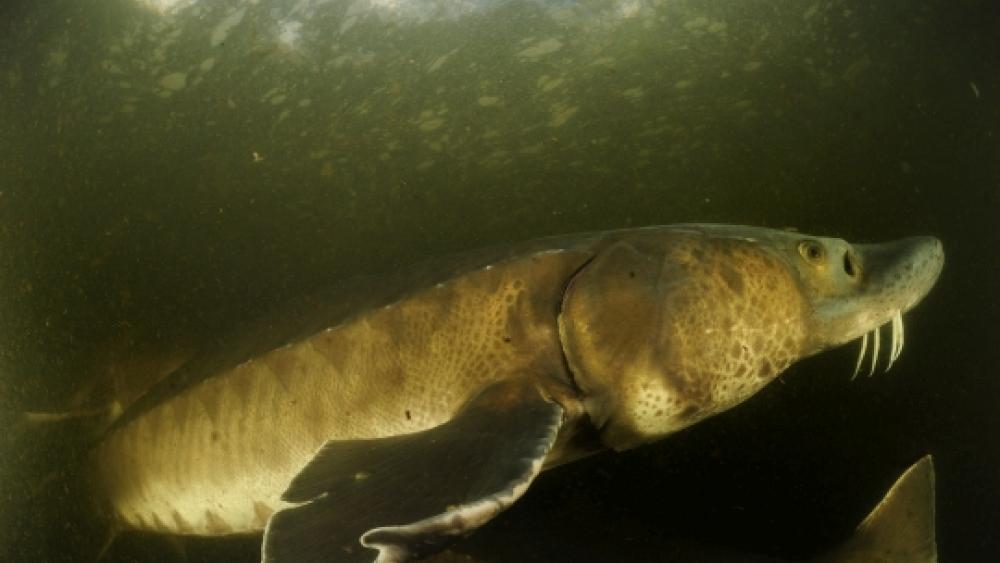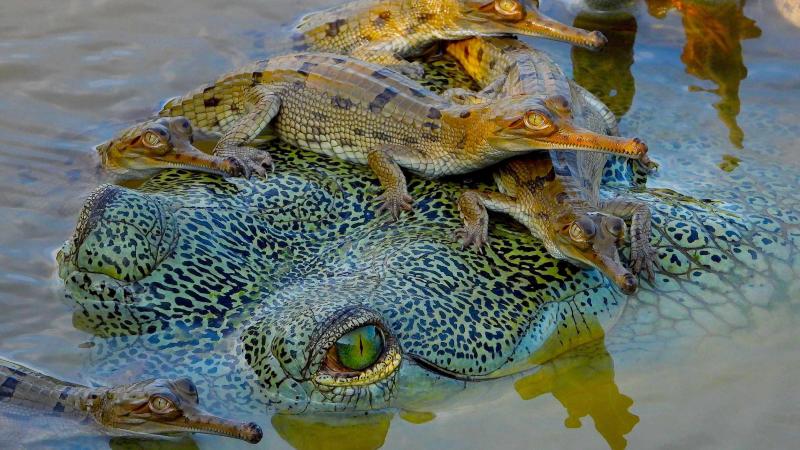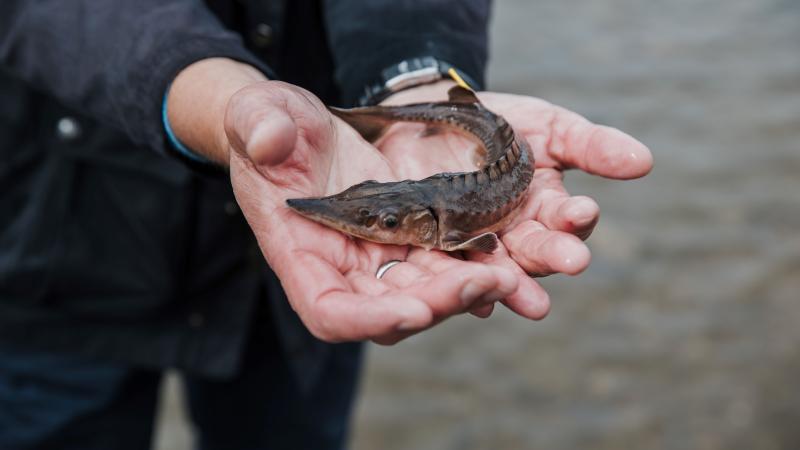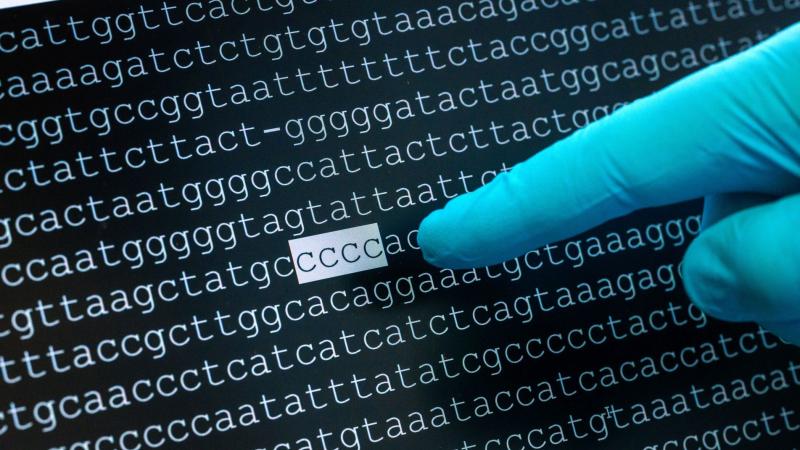
A Baltic sturgeon. This migratory fish species was once native to Germany and is considered extinct. IGB is coordinating the reintroduction of these fascinating fish. | Photo: Solvin Zankl
Inland waters such as lakes, rivers, ponds, streams and bogs are home to ten percent of all known animal species on Earth. The latest IUCN-led study in Nature found that at least 4,294 species out of 23,496 freshwater animals on the IUCN Red List are at high risk of extinction. Of the groups studied, crabs, crayfishes and shrimps are at the highest risk of extinction, with 30% threatened, followed by 26% of freshwater fishes and 16% of dragonflies and damselflies.
Causes of species loss: in addition to water shortage or nutrient pollution, mainly habitat loss and obstruction of watercourses
The study also revealed that areas with high water stress (where there is high demand and low supply) and areas with more eutrophication (where an excess of nutrients in the water leads to overgrowth of algae) are not home to higher numbers of threatened species than areas with lower water stress and less eutrophication. This indicates that, in addition to these two factors, other causes play a role in the loss of biodiversity, as other studies have also shown. These include, above all, habitat loss, the introduction of invasive alien species and the obstruction of watercourses through the construction of hydropower plants.
Migratory fish such as sturgeons, which have been highly endangered worldwide for decades, serve as umbrella species
Migratory fish such as sturgeons have been severely threatened worldwide for decades. Until the 19th century, six sturgeon species still lived in Germany, two of which in the North Sea and Baltic Sea tributaries. These have been considered extinct for 40 years. The loss of habitats and spawning grounds as well as the obstruction of waterways have led to this decline.
As the largest native freshwater fish, the sturgeon is an umbrella species that uses a variety of habitats and places high demands on the management of water bodies. The water protection measures required to reintroduce sturgeon would also benefit other freshwater species and improve their living conditions.
Dr. Jörn Geßner is co-author of the study. He coordinates the sturgeon reintroduction project in Germany at IGB and is involved in numerous international sturgeon reintroduction programms. He said: “The currently described crisis in freshwater fauna casts a gloomy light on how humans are handling natural resources. The result is not surprising. Without a rethink in the management of freshwater resources and without effective, prioritized nature and species protection, the trend described here will continue to intensify and biodiversity will decline rapidly. Species conservation can only be successful in the long term if habitats are effectively protected. Unfortunately, many people have not yet realized that we are not destroying any species, but our livelihoods.”







